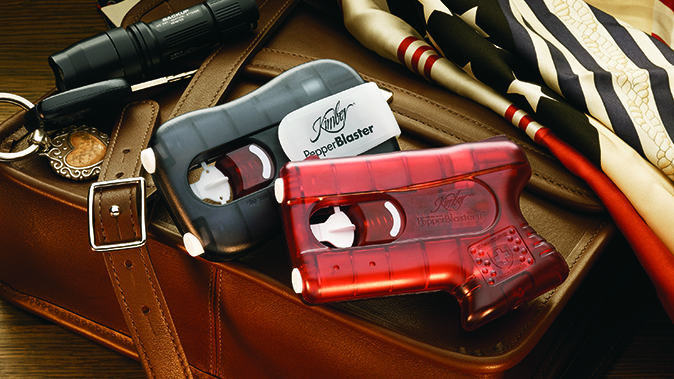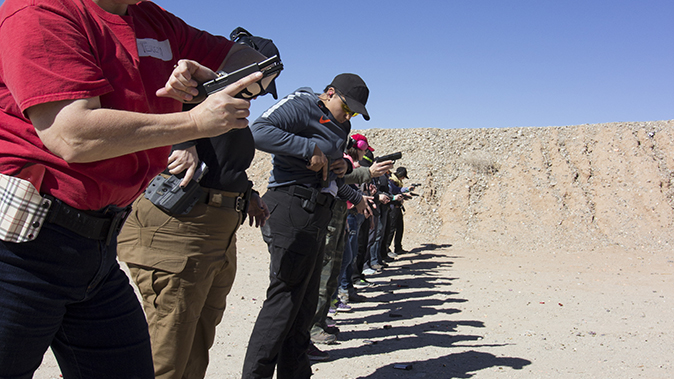Being able to protect yourself and your loved ones is something every woman must consider today, when no one is immune from the dangers of life. How you choose to do that is a very personal decision and requires learning what’s involved so you can make the best choice for you. It’s becoming more common for women to carry a firearm for personal protection, but the decision to carry one concealed should not be made lightly. You must be ready mentally and physically to take on this awesome responsibility. Once the decision is made, however, you are granted a feeling of empowerment and confidence.
Concealed carry for women is a growing market. When you decide to carry a firearm concealed, you must consider several things to make it feasible and effective. First, you need to be comfortable handling a firearm and be a competent shooter. This requires training and then more training. If you aren’t willing to put in time on the range, then concealed carry isn’t for you. Second, you need to be aware. Being plugged in to what’s going on around you allows you to react in a timely manner or possibly avoid the troubling situation altogether.
Pick Your Gun
Which firearm you decide to carry is an important first step in carrying concealed. Choose wisely, as you may need to depend on it to save yourself or a loved one. Many indoor ranges let you “try before you buy” to assist you in your purchase. Comparing different models will open your eyes to the huge impact even a small change in design can make. Choosing a pistol that your hands can comfortably manage makes all the difference when it comes to being confident with your weapon.
Advertisement — Continue Reading Below
For a firearm to serve you well, it must fit your hands and be comfortable to shoot. If it doesn’t match these two basic criteria, you will hesitate to train and your skill level will suffer; something you don’t want to discover when faced with an assailant. Personally, I carry a Glock 19 in a Galco Tuck-N-Go inside-the-waistband (IWB) holster. The Glock 19 is the right size for me, and it feels good in my hands. It’s also comfortable to shoot. My hands aren’t rubbed raw by harsh edges. This makes range time more enjoyable, which means I’ll spend more time training, allowing me to improve my skills.
The Galco holster is quality leather that becomes more comfortable over time, and it’s easy to conceal with everyday clothing. I also like carrying a full-sized firearm because it comes with a standard-capacity magazine. If I need to draw my weapon in self-defense, I don’t want a smaller-capacity magazine limiting my efforts.
Advertisement — Continue Reading Below
Optimum Carry
Once you’ve determined the firearm that’s right for you, you need to decide how you’ll carry it. You basically have two choices for everyday carry: on body or off body. If you choose on-body carry, then you’ll need to dress around your handgun. Remember, “concealed” means no one should see anything—but don’t “over-conceal,” either. You still need easy access if your firearm is going to be of any use to you. Fortunately, the firearms industry has some unique and creative ways to help women carry concealed. From traditional belt holsters to more discreet bellybands to bra and ankle holsters, there’s a holster for everyone.
The concept of concealment has even crept into the fashion world by incorporating concealment options into shirts, shorts, leggings, jackets and even underwear. With today’s choices for conceal carry, it’s much easier for women to keep a sense of style and still carry a firearm. A word of advice when considering your options: Invest in a good-quality holster that covers the trigger and is form-fitted to your specific handgun. This will allow for good retention and smooth, easy access. Now is not the time to scrimp just to save a few dollars.
If you decide that the off-body option is for you, then you have a plethora of choices in the way of bags, purses, backpacks, fanny packs, planners and more. Whichever method you choose, you must be in control of it at all times. Think of it as an extension of yourself. If a strap is available, wear it across your body so the bag can’t be grabbed from your shoulder. Be sure your firearm is holstered properly to ensure there’s no chance of a stray object getting inside the triggerguard. Also, your weapon should have its own dedicated space with a built-in holster so you’ll have easy access. Ideally, it should be positioned muzzle down, ready to draw and engage the threat.
Advertisement — Continue Reading Below
Dry-Fire Practice
Now it’s time to gain some carry confidence. Owning a firearm doesn’t make you an expert shooter. Reading about it and watching videos doesn’t count, either. If you plan on using your firearm for personal protection, you must commit to becoming proficient with it. That translates to training. Sorry, but there’s no other way to get comfortable with handling your firearm than trigger time.
You can begin at home with dry-fire practice. With your pistol chamber empty, the magazine removed and your ammo secured in another room, you can begin building muscle memory, good habits and confidence in the comfort of your own home. When dry practicing, your body is developing routines that will over time become second nature. I can’t stress the importance of this procedure enough. You’ve committed to carrying, so don’t stop short by skipping this important step. Practice drawing from your concealment holster, present toward the target, press the trigger, do an after-action assessment and reholster.
Remember that practice makes permanent. How you practice is how you will perform if the need ever arises, so practice with focus and intent. Short practice sessions done frequently will reap greater rewards than longer sessions done infrequently. If you’ve never handled a firearm before or are a novice gun owner, get professional training before beginning your dry practicing. You don’t want to create bad habits that have to be broken later.
Advertisement — Continue Reading Below
Live-Fire Practice
Now that you’ve become comfortable with handling your firearm by practicing at home, it’s time to hit the range. Live-fire practice allows you to apply what you have done at home and get used to the action and sound of your handgun. For women who are new to shooting, this may be a difficult step, but you will gain skill and confidence through repetition. Again, shorter practice sessions done frequently will speed up this process. This is the trigger time you need in order to build confidence and accuracy.
You will see how well your at-home practice has been by evaluating your point of aim and point of impact. You should hit what you aim at. Evaluate your shooting honestly and be willing to put in the time to improve at home and at the range. Besides going to the range on your own, consider taking handgun classes. You’ll learn something new in every class.
Carrying Concealed – Know Your Limits
You’ve taken many steps to reach this point of becoming a proud, competent concealed carrier. But now you must accept the fact that you may not be allowed to carry everywhere you want to go. Although we have the Constitutional right to keep and bear arms, that right is being tested and pushed to the point of absurdity in some areas. Unfortunately, bad people don’t follow the rules. In fact, people intent on harming others often consider the possibility of their victims being armed or not and choose “soft targets” where guns are banned.
Advertisement — Continue Reading Below
Mass killers have talked and written about their desire to attack gun-free zones. They understand a gun-free zone offers them a greater chance of achieving their goals. Police can only respond to a situation; armed citizens can provide an on-the-scene layer of protection should a shooter open fire. There are many examples of where permit holders have stopped and or prevented mass shootings, although there was little to no national coverage.
Campus carry has also become a hot topic throughout colleges and universities as the majority prohibit the carrying of firearms on campuses. Following the Virginia Tech shooting in 2007, college campuses became the poster child for how dangerous gun-free zones can be. There are a growing number of people who recognize the potential danger of campuses being gun-free zones and are trying to persuade colleges to allow students to carry firearms concealed. They don’t want to become victims trapped in a classroom. Although there has been pushback with this, there has also been some progress. One example is the University of Texas at Austin. In 2016, they implemented a policy that allows license holders to carry concealed on campus.
Advertisement — Continue Reading Below
Other Options
So, until carrying concealed is more widely allowed, what can you do when you’re not allowed to carry your firearm? Don’t let that stop you from protecting yourself. Your purse can hold a myriad of self-defense tools. It’s your own personal toolbox that happens to accentuate your outfit and hold your belongings. A cell phone’s hard edges make it a great weapon when used on soft targets like the face. Tactical pens can also serve as handy self-defense tools. A kubaton is a straight piece of metal, plastic, or wood about 6 inches long and often on keychains. It is extremely useful when you need to poke or compress sensitive areas of the body. Its rigidity makes it extremely effective in applying the needed pressure to encourage someone to leave you alone.
Of course, you may also want to consider carrying pepper spray like the PepperBlaster from Kimber, which allows you the added protection of distance. Carry when you can, but if the need for protection arises and you don’t have your firearm, reach for anything that will serve as a weapon and give them a fight they won’t forget.
Self-protection can take many forms, and more and more women are choosing to carry firearms. It begins with choosing the right gun, deciding how you’ll carry it and then training to use it effectively. The options available today for women to carry concealed make it possible to maintain a stylish, professional look even when carrying. All of your time and effort in becoming a competent gun owner is rewarded with the comforting feeling of empowerment and confidence.
Advertisement — Continue Reading Below
This article was originally published in “Concealed Carry Handguns” 2017. To order a copy, visit outdoorgroupstore.com.

































